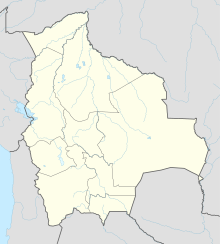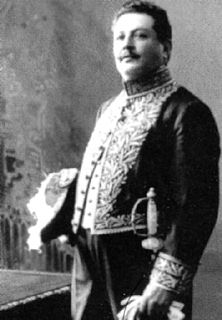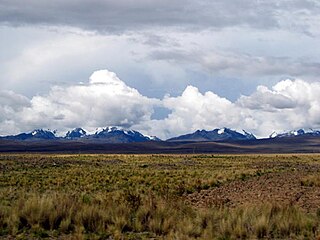
La Paz, officially known as Nuestra Señora de La Paz, also named Chuqi Yapu (Chuquiago) in Aymara, is the seat of government and the de facto national capital of the Plurinational State of Bolivia. With an estimated 789,541 residents as of 2015, La Paz is the third-most populous city in Bolivia. Its metropolitan area, which is formed by La Paz, El Alto and Viacha, makes up the most populous urban area in Bolivia, with a population of 2.3 million. It is also the capital of the La Paz Department.
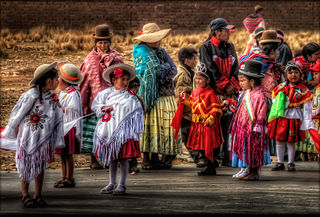
Bolivia is a country in South America, bordered by Brazil to the north and east, Paraguay and Argentina to the south, Chile to the west, and Peru to the west.

The Museum of Gold is a museum located in Bogotá, Colombia. It is one of the most visited touristic highlights in the country. The museum receives around 500,000 tourists per year.
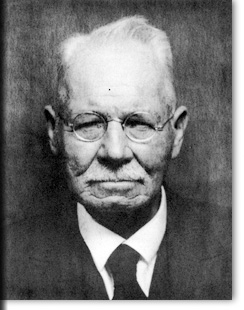
Friedrich Max Uhle was a German archaeologist, whose work in Peru, Chile, Ecuador and Bolivia at the turn of the Twentieth Century had a significant impact on the practice of archaeology of South America.

Isla del Sol is an island in the southern part of Lake Titicaca. It is part of Bolivia, and specifically part of the La Paz Department. Geographically, the terrain is harsh; it is a rocky, hilly island with many eucalyptus trees. There are no motor vehicles or paved roads on the island. The main economic activity of the approximately 800 families on the island is farming, with fishing and tourism augmenting the subsistence economy. Of the several villages, Yumani and Challapampa are the largest.

The National Museum of Anthropology is a national museum of Mexico. It is the largest and most visited museum in Mexico. Located in the area between Paseo de la Reforma and Mahatma Gandhi Street within Chapultepec Park in Mexico City, the museum contains significant archaeological and anthropological artifacts from Mexico's pre-Columbian heritage, such as the Stone of the Sun and the Aztec Xochipilli statue.
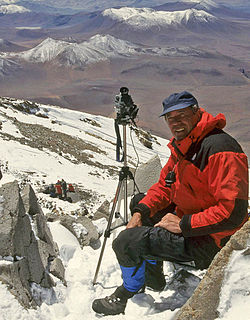
Johan Reinhard, is an Explorer-in-Residence at the National Geographic Society. He is also a senior research fellow at The Mountain Institute, West Virginia, a visiting professor at Catholic University, Salta, Argentina, and an honorary professor of Catholic University, Arequipa, Peru.

The Museo Larco is a privately owned museum of pre-Columbian art, located in the Pueblo Libre District of Lima, Peru. The museum is housed in an 18th-century vice-royal building. It showcases chronological galleries that provide a thorough overview of 5,000 years of Peruvian pre-Columbian history. It is well known for its gallery of pre-Columbian erotic pottery.

The Museo de Arte Precolombino is an art museum in Cusco, Peru, dedicated to the display of archaeological artifacts and examples of pre-Columbian artworks drawn from all regions of pre-Columbian Peru. The museum is situated on Plaza Nazarenas in Cusco's San Blas district, and has on permanent display exhibitions of some 450 individual representative artifacts that are drawn from the wider collection of its parent museum, the Larco Museum in the Peruvian capital Lima.

Pumapunku or Puma Punku is part of a large temple complex or monument group that is part of the Tiwanaku Site near Tiwanaku, in western Bolivia. It is believed to date to AD/CE 536 and later.
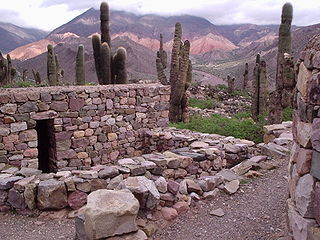
The Pucará de Tilcara is a pre-Inca fortification or pukara located on a hill just outside the small town of Tilcara, in the Argentine province of Jujuy. The location was strategically chosen to be easily defensible and to provide good views over a long stretch of the Quebrada de Humahuaca.
Michael Edward Moseley is an American anthropologist at the University of Florida.
The Andean civilizations were a patchwork of different cultures and peoples that mainly developed in the coastal deserts of Peru. They stretched from the Andes of Colombia southward down the Andes to northern Argentina and Chile. Archaeologists believe that Andean civilizations first developed on the narrow coastal plain of the Pacific Ocean. The Norte Chico civilization of Peru is the oldest civilization in the Americas, dating back to 3200 BCE.

Casa Blanca is a pre-Columbian Maya archeological site in Chalchuapa, El Salvador. The site possesses several pyramids dating to the Late Preclassic period and the Classic period. This ruin is part of the Chalchuapa archaeological zone and displays influences from the Olmecs and from Teotihuacan. It is closely related to the ruins of Tazumal and San Andrés. The government purchased the park in 1977 and it was given the name of the coffee plantation upon which it was situated. There are many pyramids at Casa Blanca but only two have been partially restored. Casa Blanca is located in the department of Santa Ana. Casa Blanca has been closed to the public and is undergoing restoration work; it has a site museum with exhibits that include Maya ceramics and other artifacts.
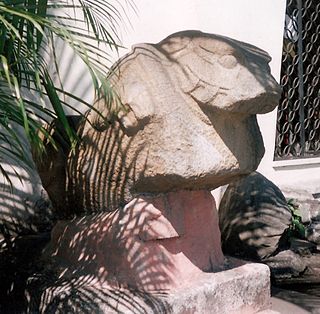
The Museo Regional de Arqueología de la Democracia is an archaeological museum in the municipality of La Democracia in the department of Escuintla in Guatemala. The museum displays pre-Columbian Mesoamerican artefacts from the Pacific lowlands datingfrom the Preclassic Period through to the Postclassic Period, with a particular emphasis upon the local Monte Alto culture. The museum is open from Tuesday through to Saturday from 8am to 4pm.

The largest Alasitas fair is an annual month-long cultural event starting on January 24th in La Paz, Bolivia. It honours Ekeko, the Aymara god of abundance, and is noted for the giving of miniature items. Other fiestas and ferias throughout Bolivia and southern Peru incorporate alasitas into religious observances: The Fiesta of the Virgin of Copacabana (Bolivia) and the Fiesta of the Virgin of Urkupiña, for example.
Sonia Alconini Mujica is a Bolivian anthropologist and archaeologist specializing in the socioeconomic and political development of the formative cultures of Andean civilizations in the Bolivian highlands around Lake Titicaca. Her work discovered evidence that the Inka interactions at the Bolivian frontier were not domination and further proved that ritual torture was used by formative societies as a means of political control.
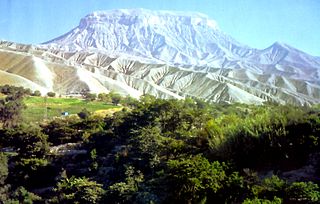
Cerro Baúl is an ancient political outpost and ceremonial center settlement in Peru established by the pre-Incan empire called the Wari. It was evacuated after a siege by the Inca Empire in about 1475. Cerro Baúl is a terraced mountain, 2000 feet above its surroundings, with a settlement on the cliff tops themselves and in the immediate surroundings. Among other finds are the remnants of a brewery and large buildings that may have been used for ceremonial feasting. There is evidence of damage that has been interpreted as a careful and deliberate destruction, by the city's own people, of several buildings prior to the mesa's being vacated.



